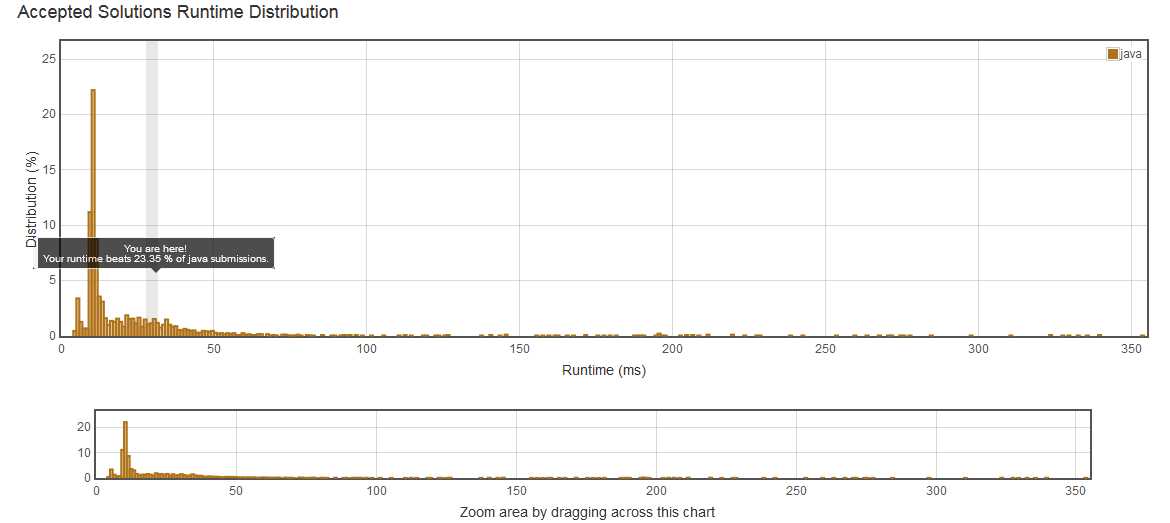标签:class cannot ted bool nbsp arraylist tco from output
question:
X is a good number if after rotating each digit individually by 180 degrees, we get a valid number that is different from X. Each digit must be rotated - we cannot choose to leave it alone. A number is valid if each digit remains a digit after rotation. 0, 1, and 8 rotate to themselves; 2 and 5 rotate to each other; 6 and 9 rotate to each other, and the rest of the numbers do not rotate to any other number and become invalid. Now given a positive number N, how many numbers X from 1 to N are good? Example: Input: 10 Output: 4 Explanation: There are four good numbers in the range [1, 10] : 2, 5, 6, 9. Note that 1 and 10 are not good numbers, since they remain unchanged after rotating. Note: N will be in range [1, 10000].
try:
class Solution { public int rotatedDigits(int N) { int counts=0; for(int i=1;i<=N;i++){ counts=valid(i)? counts+1:counts; } return counts; } public boolean valid(int n){ ArrayList<Integer> digitsList = new ArrayList<Integer>(); while(n!=0){ digitsList.add(n%10); n=n/10; } boolean contains = false; for(Integer integer:digitsList){ if(integer.equals(3)||integer.equals(4)||integer.equals(7)){ return false; } if(integer.equals(2)||integer.equals(5)||integer.equals(6)||integer.equals(9)){ contains=true; } //return false; } return contains; } }
result:

re-try:
class Solution { public int rotatedDigits(int N) { int counts=0; for(int i=1;i<=N;i++){ counts=valid(i)? counts+1:counts; } return counts; } public boolean valid(int n){ String s=((Integer)n).toString(); char[] charArray = new char[s.length()]; for(int i=0;i<s.length();i++){ charArray[i]=s.charAt(i); } boolean contains = false; for(char c:charArray){ if(c==‘3‘||c==‘4‘||c==‘7‘){ return false; } if(c==‘2‘||c==‘5‘||c==‘6‘||c==‘9‘){ contains=true; } //return false; } return contains; } }
result:

conclusion:
效率很低,n2.
看讨论区里的posts,发现主要问题在于对于n和n+1,我的方法是重新计算n+1是否good,浪费。如果使用dp,可以利用n是否good这个结论,从而降低复杂度。 讨论区里面还有一个lgn的dfs解法。
时间有限,留作以后优化。
心得2,写任何解法前,计算其时间复杂度。
标签:class cannot ted bool nbsp arraylist tco from output
原文地址:https://www.cnblogs.com/hzg1981/p/8970688.html